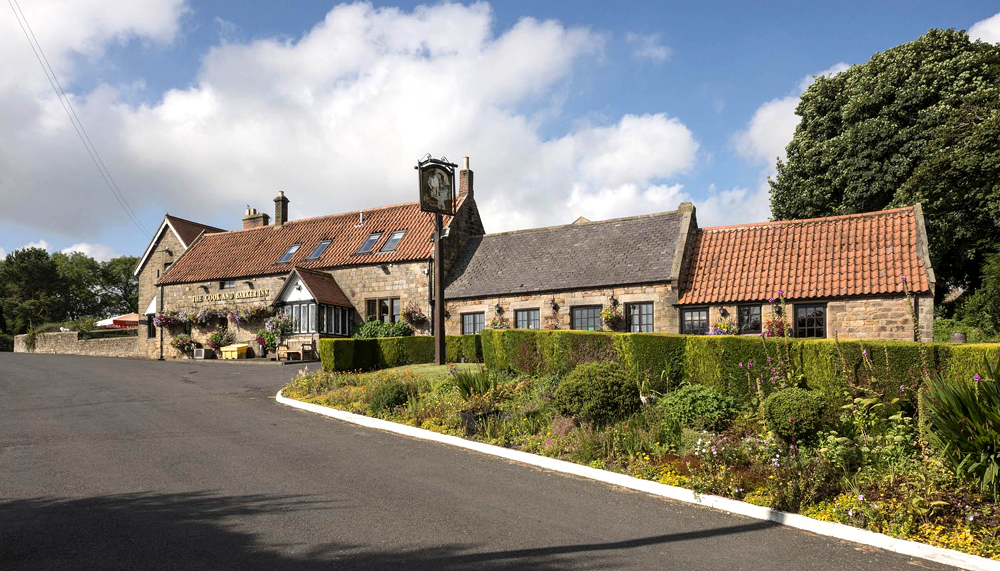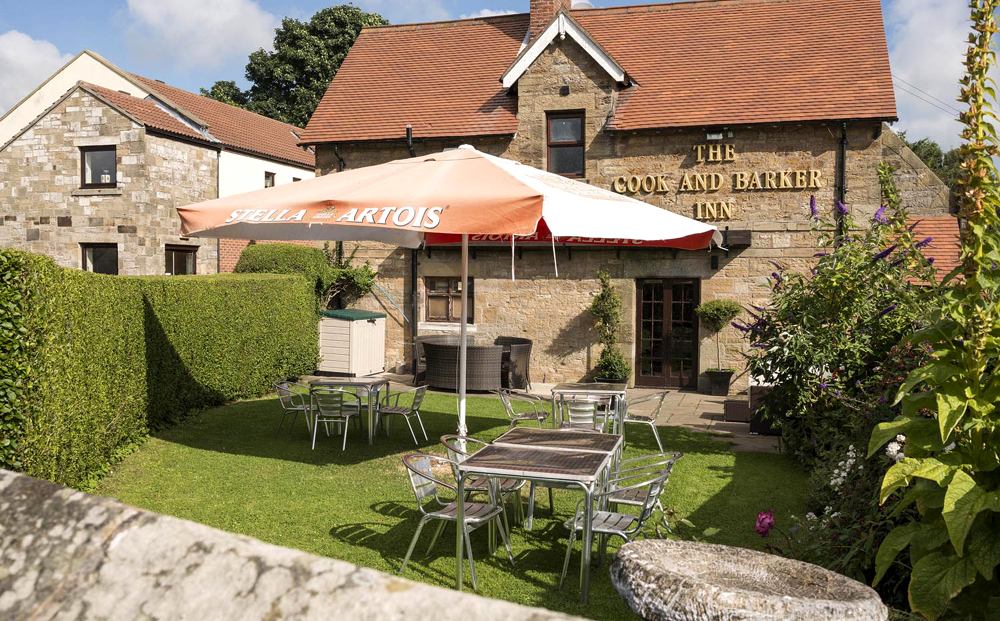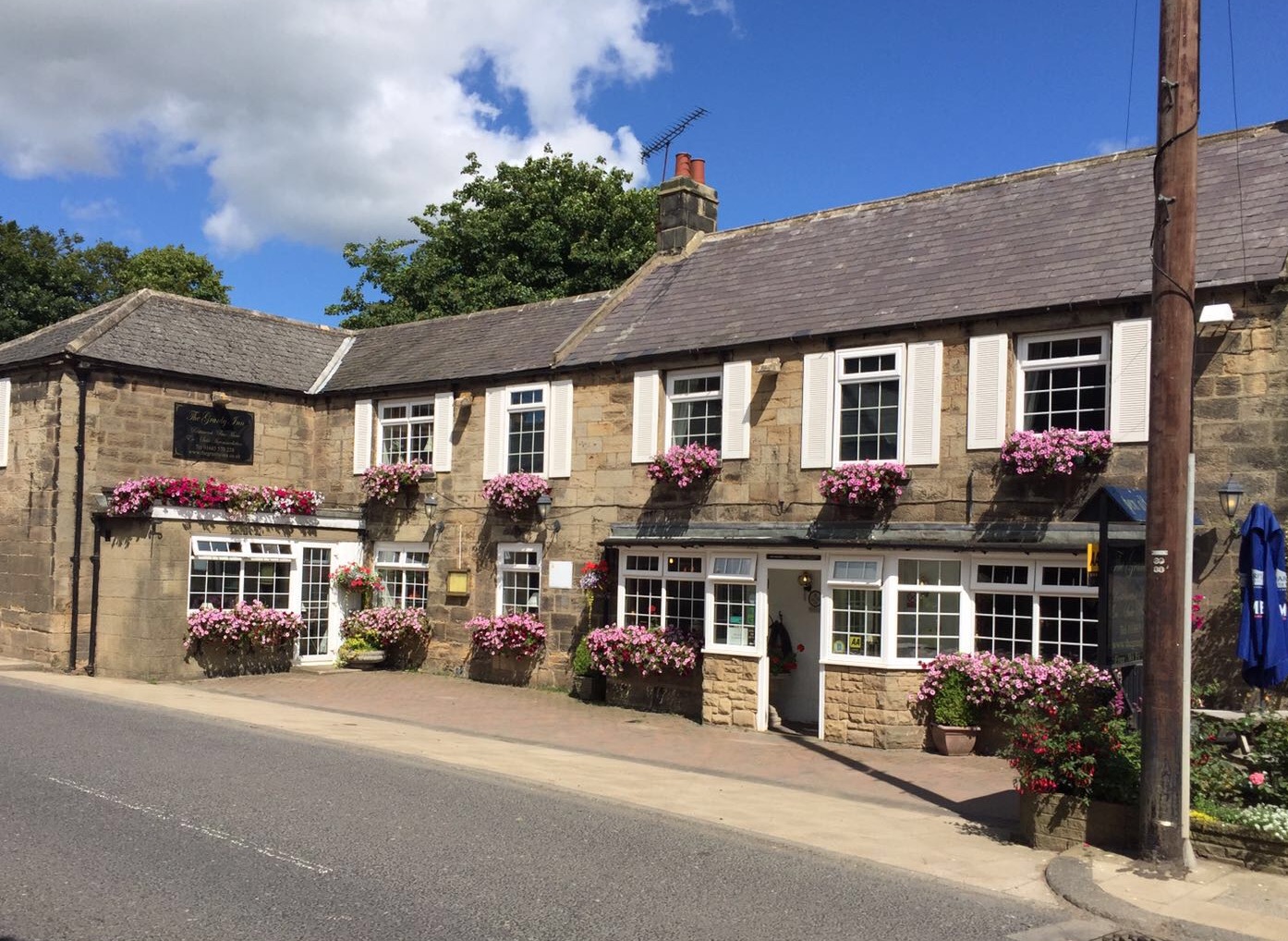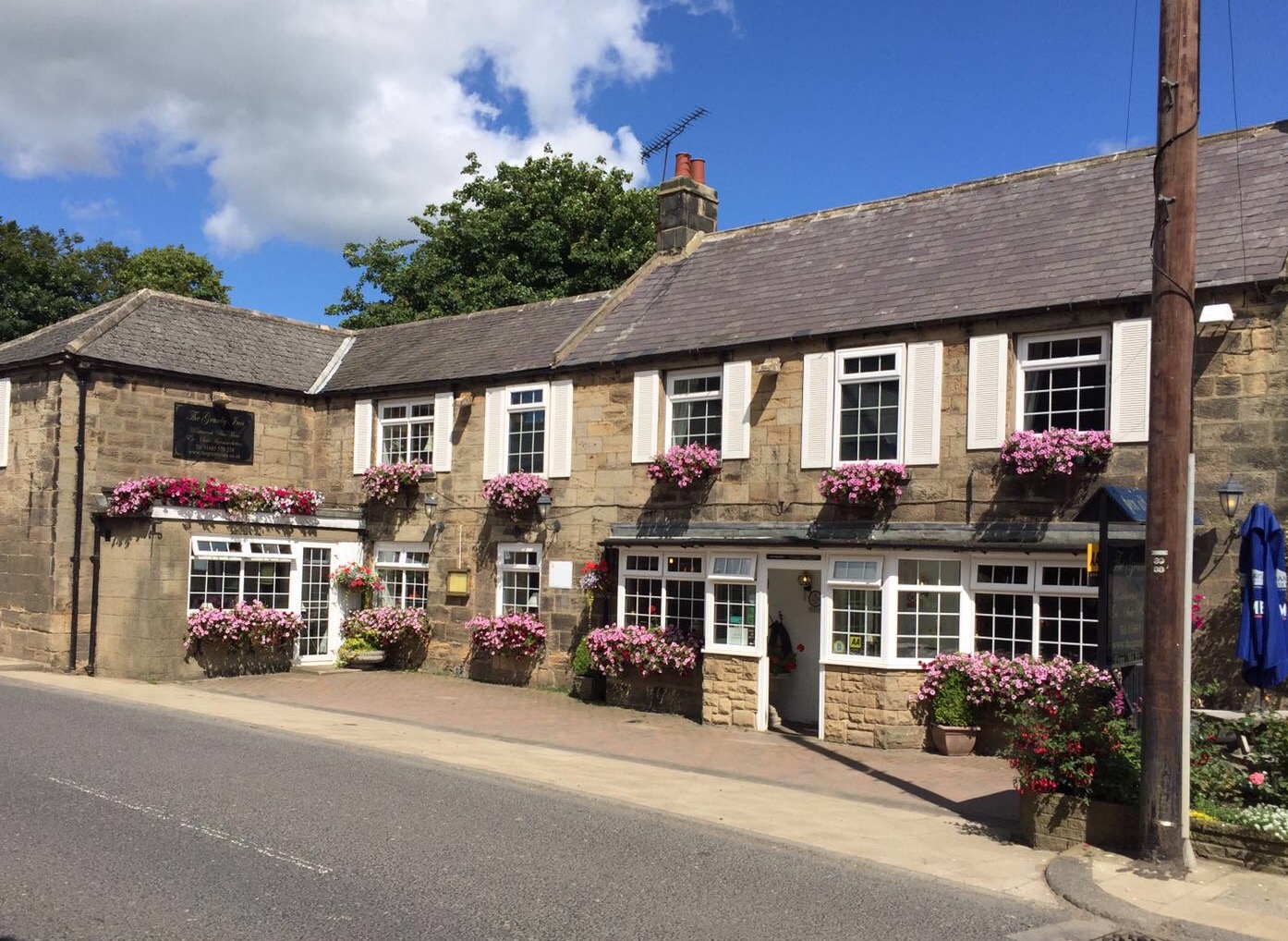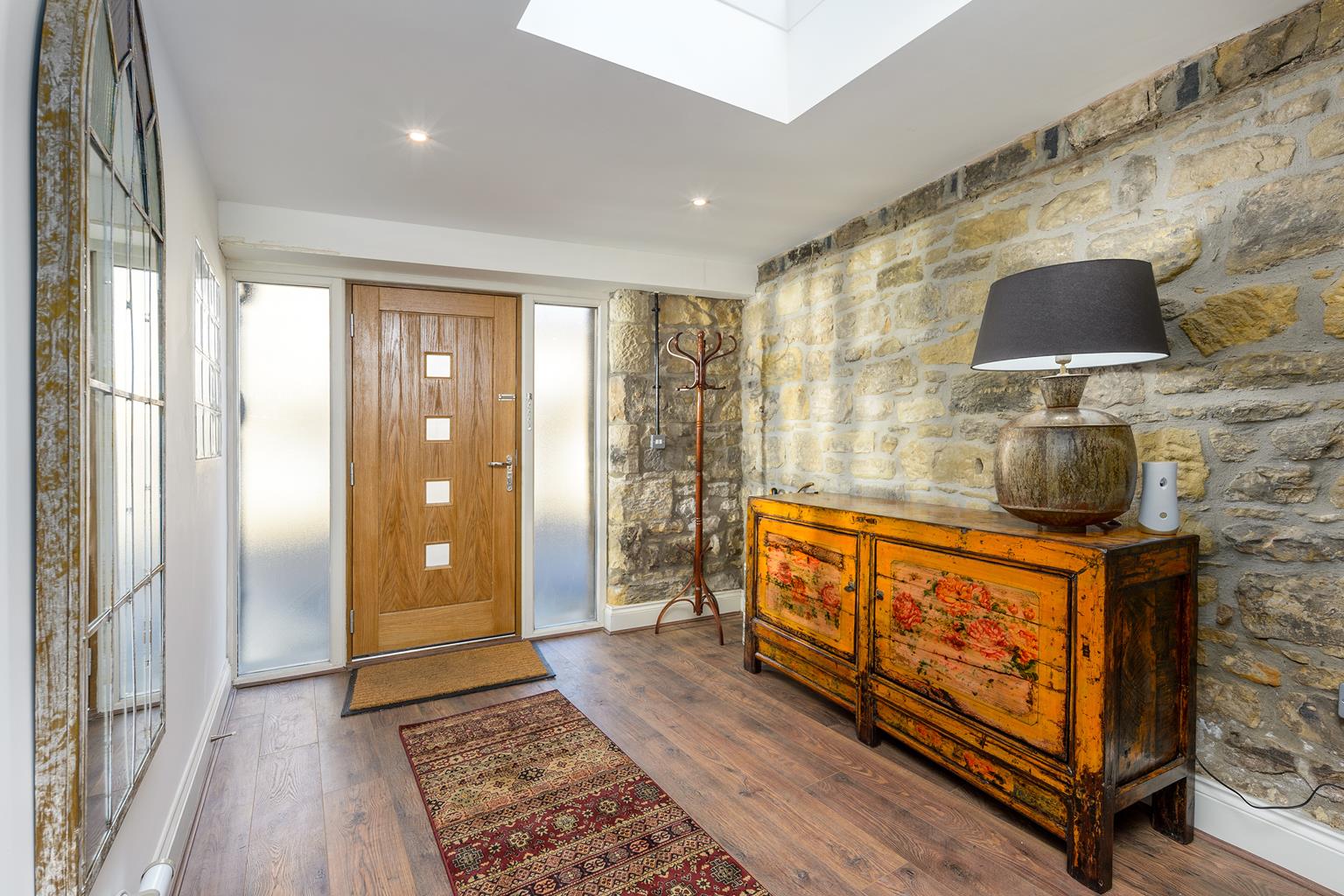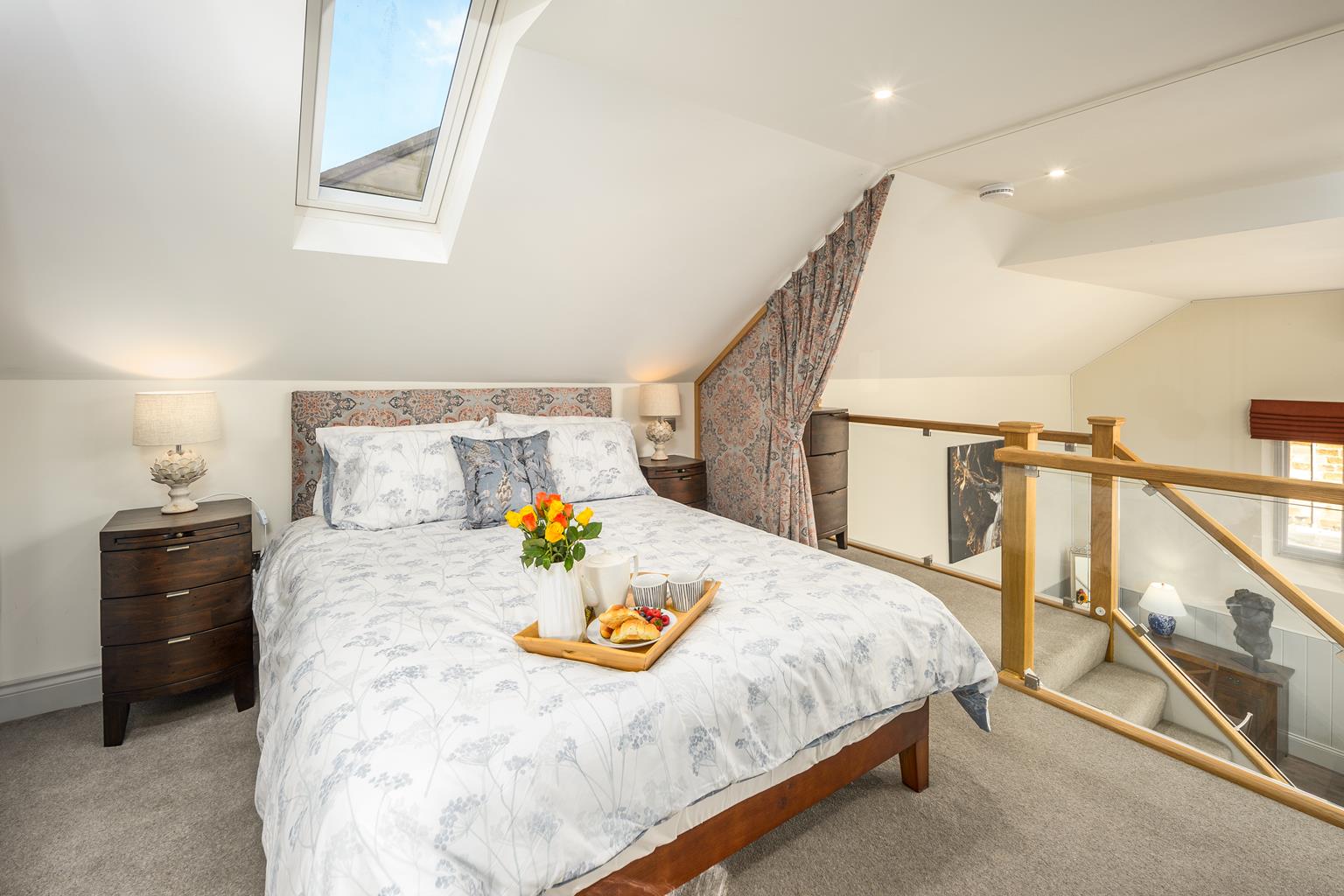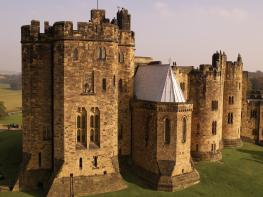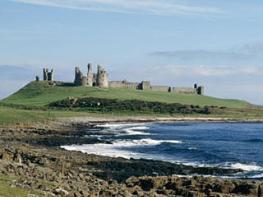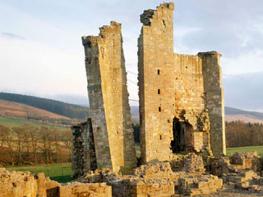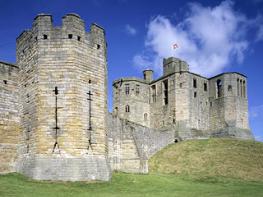Sympathetically restored, Georgian-built Pickwick House blends old-school charm with stylish…
Alnwick's Hulne Park

7.25 miles (11.7kms)
About the walk
Often called the ‘Windsor of the North’ and featured in film and TV programmes from Harry Potter to Flog It!, Alnwick Castle was founded in 1096 by Ivo de Vesci to control a river crossing and help protect England's northern border against the Scots. It had already seen considerable action when Henry Percy bought the estate in 1309 and he immediately set about reinforcing and extending the fortifications. But the Percys were a powerful family and over the generations, much of the rebuilding was also directed at emphasising their status to create the grand palace-like edifice we see today. Within the formidable defensive walls, towers and turrets you will find richly decorated and furnished state and private rooms.
A garden transformed
In the grounds to the east of the castle, the formal gardens, which had become derelict, have been completely transformed for the 21st century. Centred around a stunning cascade and endless erupting fountains of water, separate contemporary garden areas excite the senses and imagination. One of the world's largest treehouses, the Serpent Garden incorporating intriguing water features, the Rose Garden and the Poison Garden, which contains some of the world's most deadly plants, are just some of the features to explore.
Hulne Park
To the west lies Hulne Park, once a vast, walled hunting forest that provided sport and meat for the Percys until it was tamed in the 18th century by the landscaping of Lancelot ‘Capability’ Brown. At its heart stands Hulne Priory, built upon a hill that supposedly resembles Mount Carmel where the Carmelite order began in the 12th century. Hulne is the earliest Carmelite foundation in England and housed a small community of white friars until the Dissolution. Inside the strong wall, a defence against Scots raiders, are the atmospheric ruins of the church, chapter house, sacristy and refectory. The private house on the south side was once the infirmary, while to the west of the main complex rises a pele tower, added in 1486. The ruin became a feature when the park was landscaped and a summer house was built as a place of resort. The stone effigies of friars were added to enhance the air of mystery.
The Brizlee Tower occupies a satellite hill overlooking the confluence of rivers that flow through the park and commands a superb view to the Northumbrian coast and Cheviot Hills. Erected in 1781, it was designed by Robert Adam for Hugh Percy, 1st Duke of Northumberland, to commemorate his late wife, Lady Elizabeth Seymour. The present Duke and Duchess have created their own memorial in a private burial ground on the other side of the hill.
Walk directions
Walk from the castle entrance along Bailiffgate. At a fork, leave ahead along Ratten Row, which leads to an arched gateway and lodge at the entrance to Hulne Park. Keep with the main drive, bearing right and later left past successive junctions. Eventually, after a mile (1.6km) you will reach a junction, from which a track taking the red waymarked trail towards Park Farm leaves to the right.
You will later return to this point, but for the time being, remain with the main drive for a further 0.25 miles (400m) to the next junction. Following yellow waymarkers, turn left along a rising gravel track. Keep right at successive forks into forest, in time reaching a hilltop clearing. The Brizlee Tower can then be seen over to the right.
Continue with the track, which swings around the western end of the hill, where the Long Stone looks out across the Aln Valley. The gated drystone-walled enclosure to the left is a private burial ground for the Percys. Carry on around the hill to a crossing and turn left, shortly passing the Hermit's Cave. Keep right at the next junction, dropping back to the main drive. Go right again to return to the junction above Park Farm. Now following red waymarkers, go left. After only 50yds (46m), turn off left on a rough track that descends through woodland for over 0.5 miles (800m) before reaching the Iron Bridge across the River Aln.
On the opposite bank, swing right above the river. After 200yds (183m), leave the track and climb a grass bank towards Hulne Priory on the hill above. Entry is through a doorway in the corner of the high wall.
Leaving the priory by the same doorway, follow the wall away to the right. Reaching a junction beyond the outer wall, bear right on a downhill track marked with red and blue arrows. At the bottom, join a riverside track from the right and continue along the valley for 0.75 miles (1.2km).
The track crosses the Aln on Filbert Haugh Bridge. On the opposite bank, keep ahead with the main track (still indicated with red and blue markers), later passing Monk's Bridge. Keep left at a subsequent fork, passing Duchess's Bridge, before eventually reaching another junction in front of a grass triangle. Swing right up to the main drive. There, turn left and walk out past the lodge back into town.
Additional information
Well-surfaced tracks, no stiles
Parkland and woodland
No dogs allowed in Hulne Park
OS Explorer 332 Alnwick & Amble
In Bailiffgate in Alnwick, near castle
In Market Place and by coach park
<p>Hulne Park is private, but is open to the public 11am to sunset most days of the year. </p>
WALKING IN SAFETY
Read our tips to look after yourself and the environment when following this walk.
Find out more
Also in the area
About the area
Discover Northumberland
If it’s history you’re after, there’s heaps of it in Northumberland. On Hadrian’s Wall you can imagine scarlet-cloaked Roman legionaries keeping watch for painted Pictish warriors while cursing the English weather and dreaming of home. Desolate battlefield sites and hulking fortresses such as Alnwick, Dunstanburgh, Bamburgh and Warkworth are reminders that this, until not so very long ago, was a contested border region. The ruins of Lindisfarne bear witness to the region’s early Christian history.
Northumberland also has some of Britain’s best beaches. On summer days, and even in winter, you’ll see surfers and other brave souls making the most of the coast. Inland, there are some great walks and bike rides in the dales of the Cheviot Hills and the Simonsides – just hilly enough to be interesting, without being brutally steep. There's dramatic scenery in the High Pennines, where waterfalls plunge into deep valleys, and there are swathes of heather-scented moorland. Northumberland National Park covers over 400 square miles of moorland and valleys with clear streams and pretty, stone-built villages. It’s just the place for wildlife watching too. You’ll find flocks of puffins, guillemots and other seabirds around the Farne Islands, and seals and dolphins offshore.
Nearby stays
Restaurants and Pubs
Nearby experiences
Recommended things to do
Why choose Rated Trips?
Your trusted guide to rated places across the UK
The best coverage
Discover more than 15,000 professionally rated places to stay, eat and visit from across the UK and Ireland.
Quality assured
Choose a place to stay safe in the knowledge that it has been expertly assessed by trained assessors.
Plan your next trip
Search by location or the type of place you're visiting to find your next ideal holiday experience.
Travel inspiration
Read our articles, city guides and recommended things to do for inspiration. We're here to help you explore the UK.





